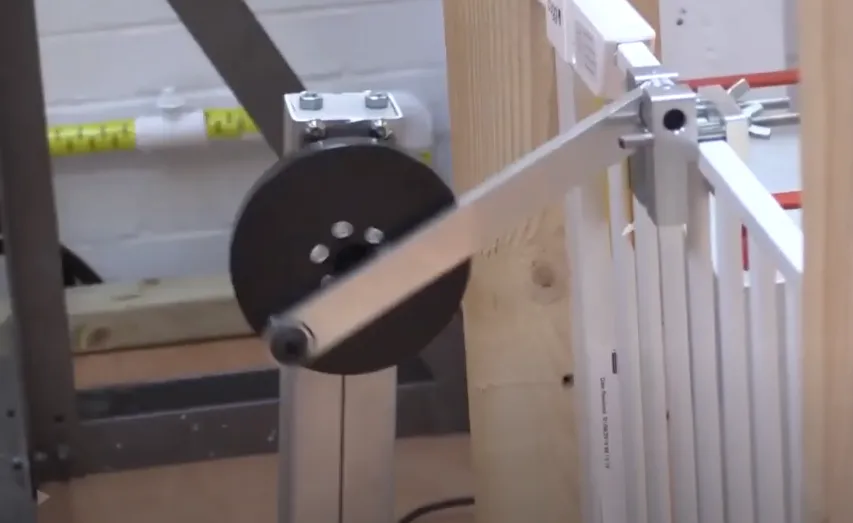ASTM F404 High Chairs Safety and Durability Testing
The American Society for Testing and Materials (ASTM) F404 standard is a critical document that outlines the requirements for safety testing of high chairs used by children. This standard ensures that high chairs meet stringent criteria to protect young users from potential hazards such as tipping, structural failure, and material toxicity.
High chairs are essential furniture items in households with infants and toddlers. They provide a secure seating solution during meal times, fostering the development of motor skills and independence among children. However, these benefits come with significant safety concerns that must be addressed through rigorous testing protocols.
The ASTM F404 standard is designed to cover various aspects of high chair design and functionality. It includes detailed specifications for materials, construction, stability, and durability. Compliance with this standard not only ensures the product meets regulatory requirements but also enhances brand reputation by demonstrating a commitment to child safety.
Compliance testing typically involves several key procedures:
- Stability Test: Ensures the chair does not tip over under specified conditions.
- Bending Strength: Determines whether the frame can withstand expected loads without permanent deformation.
- Torsional Rigidity: Evaluates how well the structure resists twisting forces, which is crucial for maintaining stability during use.
Manufacturers must also ensure that all materials used are non-toxic and suitable for prolonged contact with infants. Additionally, the finish should be safe to prevent ingestion by young children who may chew on parts of the chair.
The testing process is rigorous and involves multiple stages. Initially, samples are prepared according to ASTM F404 specifications. This includes cleaning, drying, and ensuring consistency across all test specimens. Once ready, they undergo a series of physical tests designed to simulate real-world scenarios where the product might be used or mishandled.
Testing laboratories specializing in furniture testing utilize advanced equipment tailored specifically for high chair evaluation. These facilities possess state-of-the-art instruments capable of accurately measuring loads and angles, providing precise data on how each sample performs under stress.
The results from these tests are comprehensive reports detailing every aspect of the product's performance against ASTM F404 standards. These documents serve as invaluable resources for quality assurance teams within manufacturing companies, allowing them to identify areas needing improvement or enhancement before products reach market shelves.
Compliance with ASTM F404 helps safeguard children by reducing risks associated with poorly designed or manufactured high chairs. By adhering strictly to these guidelines during development stages, manufacturers can create safer products while maintaining high standards of quality assurance throughout production processes.
Why It Matters
The importance of ASTM F404 High Chairs Safety and Durability Testing cannot be overstated. The primary goal is to protect children from accidents that could occur if high chairs were not designed or manufactured according to strict safety standards.
Injuries caused by high chair failures are more common than one might think. According to various studies, falls from improperly secured high chairs have led to severe injuries among infants and toddlers. By conducting thorough testing based on ASTM F404 criteria, manufacturers can significantly reduce these risks.
Moreover, complying with this standard enhances consumer confidence in the brand name. Parents are increasingly seeking reliable products that not only meet basic functionality needs but also offer peace of mind regarding safety features. Demonstrating adherence to recognized industry standards like ASTM F404 reinforces trust and loyalty among customers.
Customer Impact and Satisfaction
The benefits of ensuring high chair safety extend beyond mere regulatory compliance; they directly impact customer satisfaction and brand reputation. When consumers know their children are using safe products, they feel reassured about the quality of goods provided by reputable brands.
Companies that invest in robust testing programs not only meet but exceed expectations set forth by ASTM F404. This proactive approach helps build long-term relationships with satisfied customers who continue to choose these trusted brands for all future purchasing decisions related to child care products.
Use Cases and Application Examples
The application of ASTM F404 is wide-ranging, encompassing numerous scenarios where high chairs are used. These include:
- In-home use by parents during feeding times.
- Daycare centers providing a secure environment for young children.
- Hospitals and other healthcare facilities ensuring patient comfort while eating.
- Public events or gatherings where children need supervised seating arrangements.





